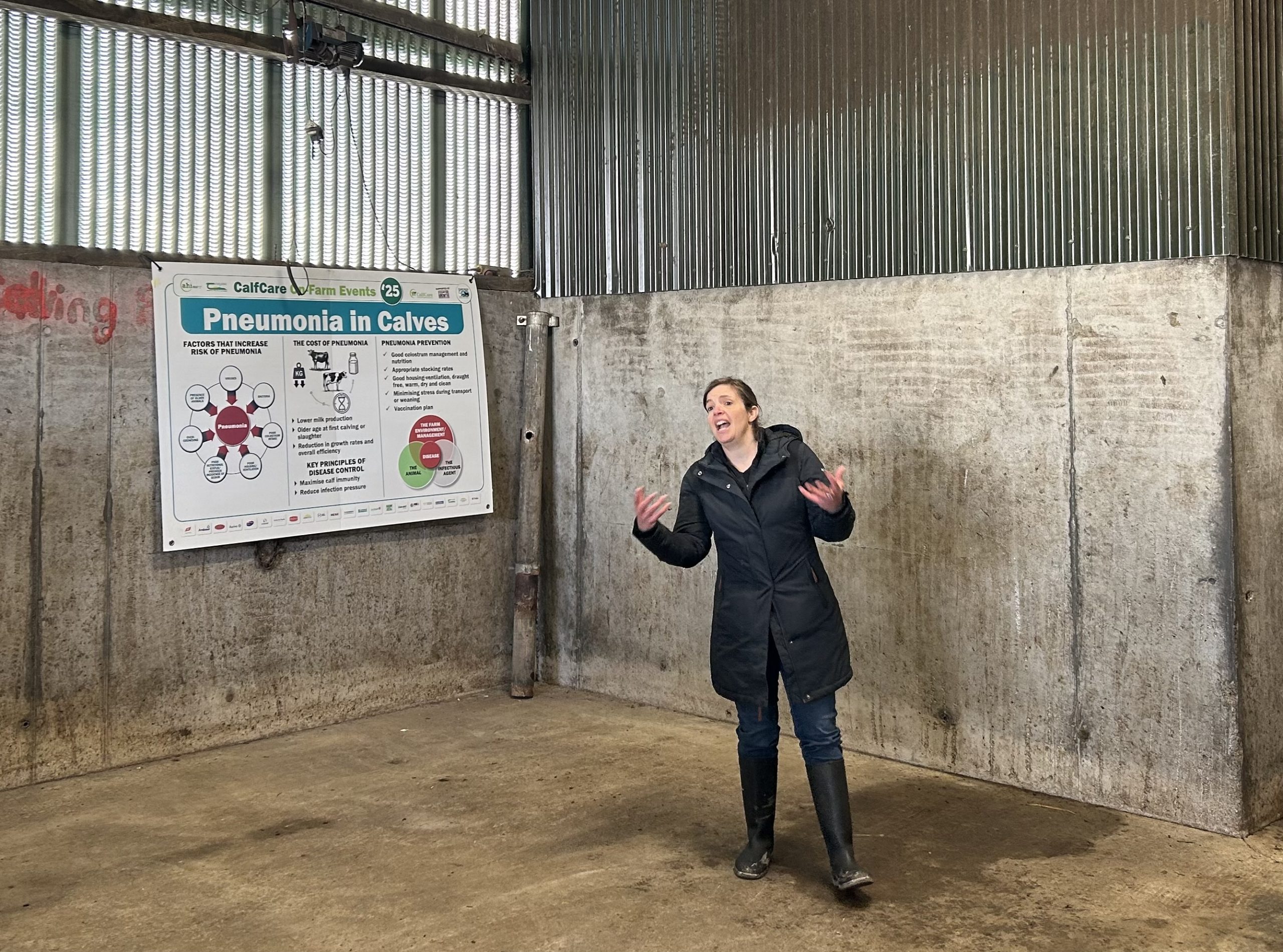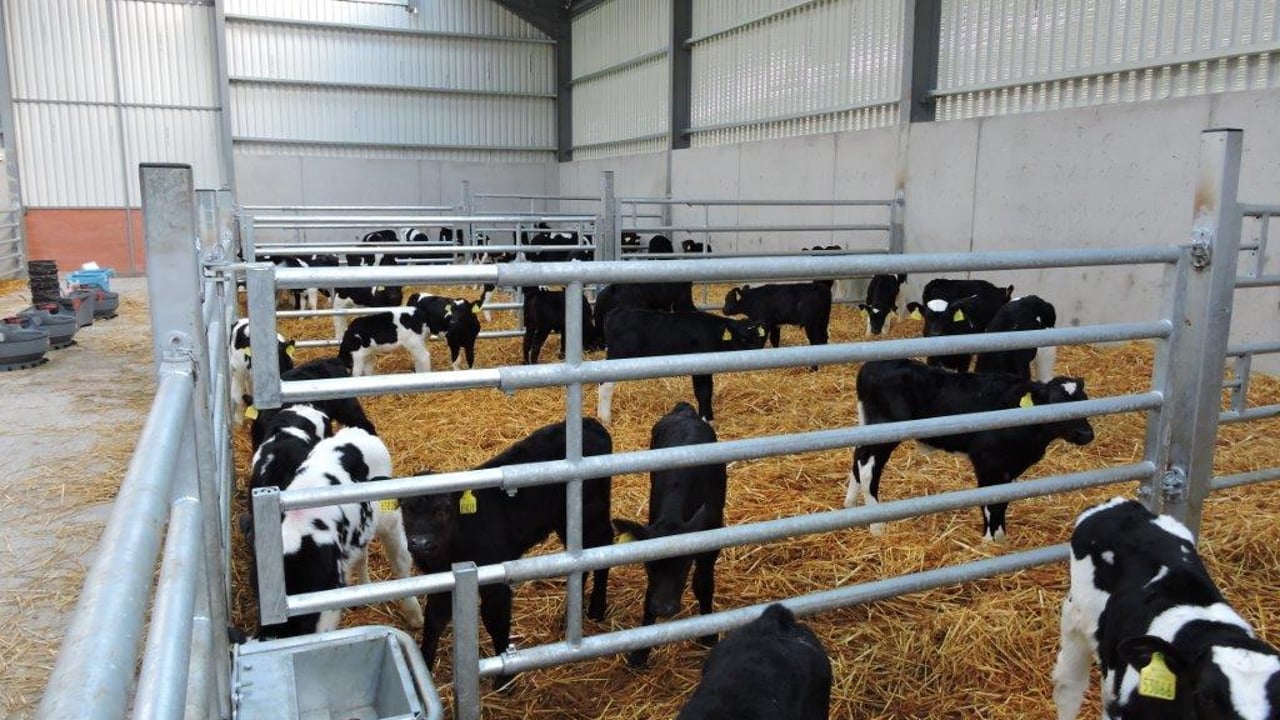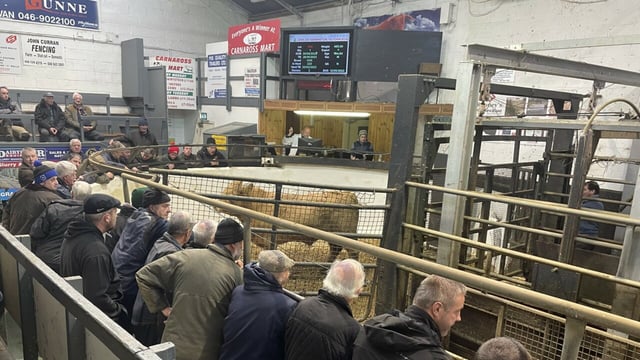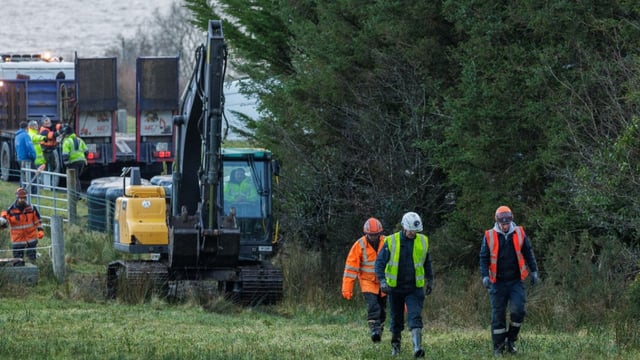Pneumonia in calves: What is it costing the farmer?
The calving season is underway which means that day by day, sheds will be filling up with calves and the risk of pneumonia will increase.
Any disease a calf picks up at a young age will have a major impact on the economic viability of the farm due to the direct cost of calf losses and treatment along with the long-term effects on performance.
Pneumonia is the most common cause of death and poor performance in young cattle from weaning to 10 months-of-age.
Veterinary epidemiologist with Animal Health Ireland (AHI), Natascha Meunier spoke about preventing pneumonia in calves at a CalfCare event on the farm of John Comerford in Co. Laois.
Comerford had recently built a new calf shed where the calves were completely separate to the cows and Meunier said that the shed was needed as the calves were previously sharing the same air space and the ventilation was poor.
"John's calves suffered with the old calf shed," Meunier explained adding that the calves were more prone to pneumonia due to the shared air space and the poorer ventilation.
The costs of treating sick calves and calf mortality are quite obvious when a farmer calculates what the episode has set him/her back.
What is quite often not accounted for when we talk about the costs associated with pneumonia outbreaks is the impact it has on growth rates, calf performance and calf health.
Pneumonia can reduce average live weight gain by up to 200g/day and these animals may never recover completely which increases their lifetime costs and reduces their efficiency to convert feed to gain or performance.
According to AHI, 14.5% of dairy heifers that get pneumonia as calves, fail to reach their first lactation which is a staggering percentage.

Of the heifers that do calve down and get into the milking parlour, they have a reduction in first lactation milk production of 150kg, a 30-day increase in time to first calving and a reduction of bodyweight at 14 months-of-age of 29kg.
Lung damage at slaughter has been evident from studies despite the animal not being treated for pneumonia previously which shows that those with the clinical signs of the disease are only a small part of the problem.
The studies show that animals with lung damage had a lower growth rate compared to those with healthy lungs coming in 21kg lighter.
Meunier urged farmers to try and reduce the infection pressure in the calf shed and to maximise the immunity of the calf in an effort to prevent pneumonia from occurring which may ultimately have serious repercussions on farm profitability.
Antibiotics are ineffective against viral infections, but in cases where bacterial involvement is suspected, antibiotic treatment is required.
In rare cases, lungworm may be causing pneumonia in young calves and these will not respond to antibiotic treatment.
In order to prevent pneumonia from occurring, good hygiene is needed at calving, followed by removal of the calf immediately from the calving pen.
The calf is going to need quality colostrum after birth and continue to receive that colostrum for four to five days after birth.
Deficiencies in vitamin E and selenium will weaken the animal’s immune system, and so any nutritional deficiencies should be examined.
Appropriate calf housing with good ventilation, plenty of air, no draughts and a well-bedded dry lying area is crucial – make sure that effluent can flow away from underneath calves.
If you are grouping calves, make sure to group them by age and size to make management and feeding easier and to keep the group stable.
The AHI vet also advised to have an appropriate stocking rate of calves in the shed and to minimise the stress on calves when transporting or weaning.
A vaccination strategy should be implemented on the farm with calves being vaccinated from two weeks-of-age – usually two shots, four weeks apart, followed by a booster before the next risk period.





